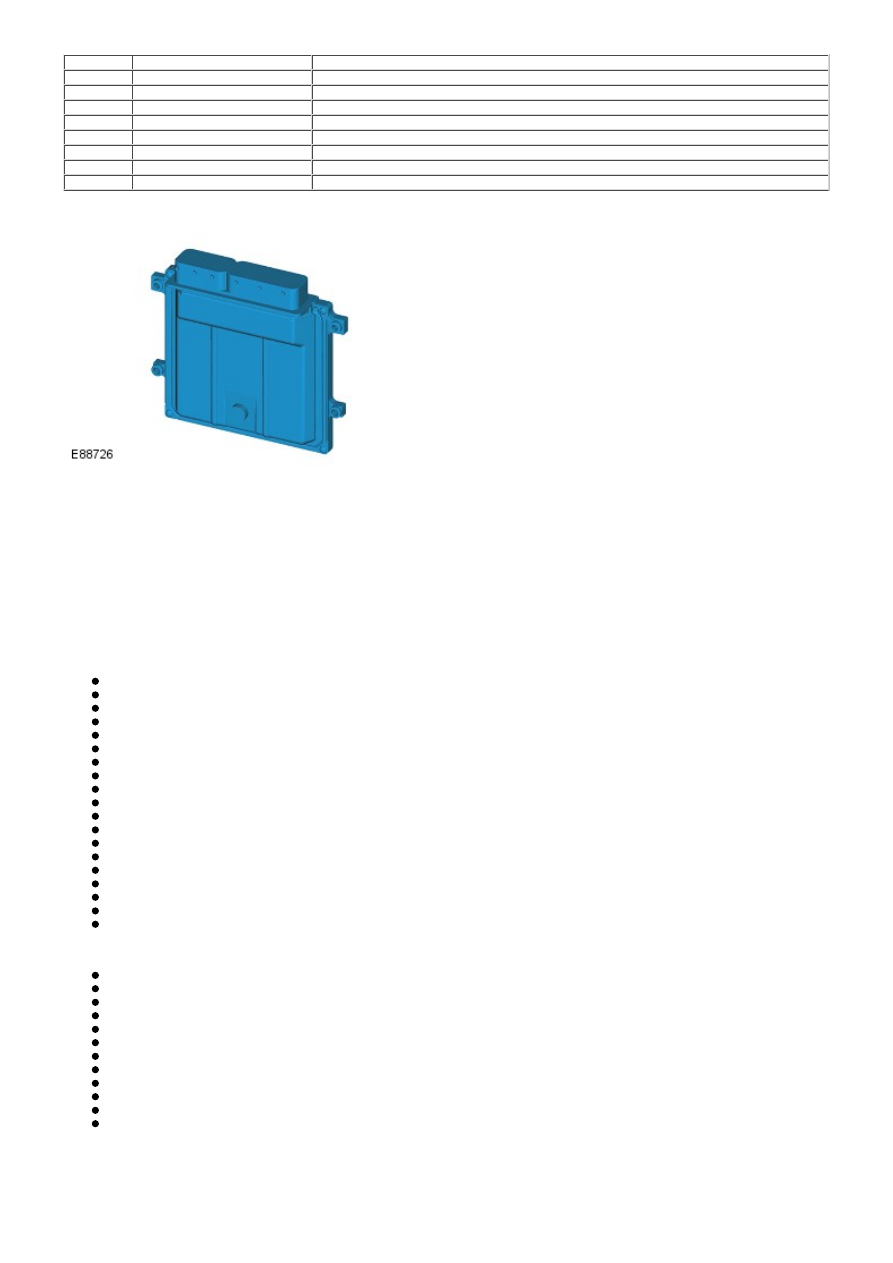Frelander 2. Manual - part 301

12
-
Restraints Control Module (RCM)
13
-
Knock sensors (2 off)
14
-
Fuel rail temperature/pressure sensor
15
-
Clockspring
16
-
Terrain response control module
17
-
Transmission Control Module (TCM)
18
-
ABS module
19
-
Diagnostic socket
20
-
CJB
ENGINE CONTROL MODULE (ECM)
The ECM is located on a bracket in a central position on the engine compartment firewall. The ECM is attached to a
housing and secured with 4 screws. The housing is located in the bracket and locked in position.
The ECM is supplied with battery voltage from fuses located in the BJB. A permanent battery supply is provided to ensure
adaptive data is not lost when the engine is switched off.
A regulator, located within the ECM, supplies a 5V current to internal components such as the micro-processor unit. Other
components or functions requiring full battery voltage are controlled by external relays or internal power stages.
The micro-processor within the ECM receives signals from different components and control modules and uses a program
within the ECM software to interpret the signal information and issue signals which relate to how the engine components
and functions should be controlled.
The ECM receives inputs from the following:
CMP sensors
CKP sensor
Fuel rail pressure sensor
MAF sensor
Knock sensors
Fuel rail temperature/pressure sensor
ECT sensor
Engine oil level/temperature sensor
Manifold Absolute Pressure (MAP) sensor
Electric throttle - Throttle Position (TP) sensor
APP sensor
Fuel tank leakage monitoring module (NAS only)
Cooling fan control
Heated Oxygen sensors (HO2S)
Stop lamp switch (via Central Junction Box (CJB))
Speed control inhibit switch
Intake Air Temperature (IAT) sensor
Ambient Air Temperature (AAT) sensor
Transmission Control Module (TCM).
The ECM sends outputs to the following:
Main relay
Air Conditioning (A/C) relay
Fuel injectors
Ignition coils
Engine cooling fan control
Electric throttle
Electric fuel pump driver module
Variable Camshaft Timing (VCT) solenoids
Starter relay control
Variable intake manifold control valves
Variable inlet cam profile switching solenoid valves
Transmission Control Module (TCM).
SENSORS
The ECM optimizes engine performance by interpreting signals from numerous vehicle sensors and other inputs. Some of
these signals are produced by the actions of the driver, some are supplied by sensors located on and around the engine